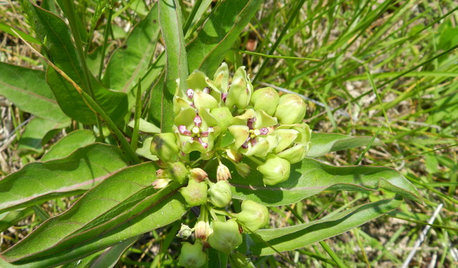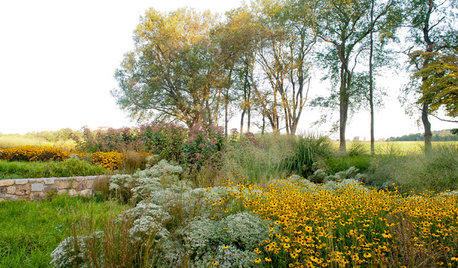asclepias viridis (spider milkweed)
missa7
12 years ago
Related Stories

GARDENING GUIDESGreat Design Plant: Asclepias Viridis
Green antelopehorn is a milkweed that is short, drought-tolerant, not aggressive and a monarch favorite
Full Story
GARDENING GUIDESGreat Design Plant: Asclepias Incarnata for a Butterfly Garden
Beautiful swamp milkweed makes it easy to help monarchs and other pollinators in eastern U.S. gardens
Full Story
GARDENING GUIDES6 Plants That Beat Butterfly Bush for the Wildlife Draw
It's invasive, a nonnative and a poor insect magnet. Check out these better alternatives to butterfly bush in the garden
Full Story
GARDENING GUIDESHow to Find the Right Native Plants for Your Yard
Find plant maps, sale sites and guides that make going native in the garden easier than ever
Full Story
GARDENING FOR BUTTERFLIESBe a Butterfly Savior — Garden for the Monarchs
Keep hope, beauty and kindness alive in the landscape by providing a refuge for these threatened enchanters
Full Story
GARDENING GUIDES6 Steps to Creating Your Butterfly Garden
Encourage these fanciful winged beauties to visit your garden while helping restore their fragmented habitat
Full Story
GARDENING FOR BUTTERFLIES3 Ways Native Plants Make Gardening So Much Better
You probably know about the lower maintenance. But native plants' other benefits go far beyond a little less watering and weeding
Full Story
FALL GARDENINGWhat Monarch Butterflies Taught Me About Garden Design
Thinking like a butterfly leads to fresh perspectives in the garden and in life
Full Story
GARDENING GUIDES10 Essential Wildflowers for the U.S. Central Plains
Focusing on prairie wildflowers supports the most wildlife in a low-maintenance Plains landscape
Full Story
GROUND COVERSGive Your Lawn a Taste of the Wild
Consider the joys of an irregularly trimmed meadow lawn: It’s ecofriendly, visually interesting and still good for romping
Full Story






butterflymomok
boisenoise
Related Professionals
Middle Island Landscape Architects & Landscape Designers · Middletown Landscape Contractors · Surprise Landscape Contractors · Fountain Valley Landscape Contractors · Matteson Landscape Contractors · Riverhead Landscape Contractors · San Bruno Landscape Contractors · New Carrollton Landscape Contractors · Winter Gardens Landscape Contractors · North Miami Beach Fence Contractors · Kingsburg Fence Contractors · Baileys Crossroads Window Contractors · Kuna Window Contractors · Sacramento Window Contractors · San Ramon Window Contractorsimabirdnut
susanlynne48
imabirdnut
Mary Leek
Jacob Berg
Mary Leek
boisenoise
Mary Leek